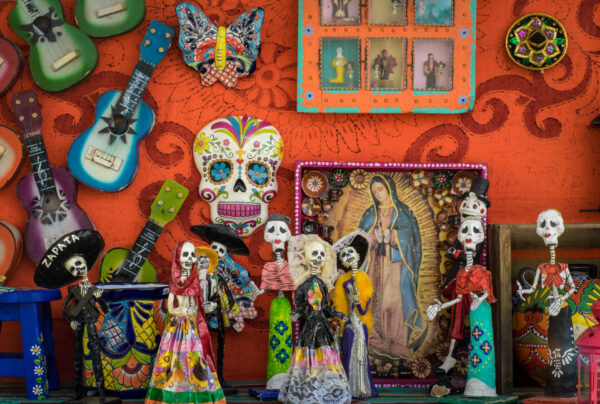Dia de los Muertos, or Day of the Dead, is a vibrant and colorful celebration that honors and remembers deceased loved ones. This Mexican holiday, with its rich history and unique traditions, is a fascinating blend of indigenous Mesoamerican beliefs and an integral part of Mexican culture. It offers a profound and joyful way to embrace the cycle of life and death, emphasizing the idea that death is a natural part of the human experience. In honor of this day, one of your favorite Manchester restaurants, Vallarta, is discussing the history and key elements of this special holiday.
Dia de los Muertos has deep historical roots that trace back to indigenous Mesoamerican cultures. To be specific, particularly the Aztecs, who celebrated death as an integral part of life. Prior to the arrival of European influence, these civilizations had various rituals and ceremonies to honor the deceased.
Central to Dia de los Muertos are ofrendas, or altars. These altars are elaborately decorated with an array of items that hold personal and spiritual significance. They often feature photos of the deceased, candles, marigold flowers, sugar skulls, and favorite foods and beverages of the departed. The ofrendas are intended to welcome the spirits of loved ones back to the world of the living for a brief visit.
Sugar skulls, intricately decorated with colorful icing, are a ubiquitous symbol of Dia de los Muertos. They represent the idea that death should be celebrated, not feared. Many people decorate these skulls with the names of loved ones who have passed, displaying them on the ofrendas.
The elegant La Catrina is an iconic figure associated with Dia de los Muertos created by José Guadalupe Posada. She has since become a symbol of the holiday, representing the idea that death is a universal experience that transcends social class.
Pan de Muerto, or “bread of the dead,” is a sweet and round bread adorned with bone-shaped decorations. It’s often placed on the ofrendas and consumed by the living as a way to connect with the spirits of the deceased.
Bright orange marigold flowers, called cempasúchil or “Mexican marigolds,” are used to create vibrant paths and floral arrangements. They’re believed to help guide the spirits of the dead to the ofrendas with their vibrant colors and fragrant scent

Dia de los Muertos is typically celebrated over two days, November 1st and 2nd. November 1st is dedicated to deceased children and infants, while November 2nd is a day for honoring all deceased adults.
Families and communities come together to visit cemeteries, and clean and decorate the graves of their loved ones. They share stories and reminisce, eat traditional foods, and often play music and dance in a lively and festive atmosphere.
If you’re looking to stop in at one of the best Manchester restaurants around, we encourage you to check out our online menu for more information or order online today. In the meantime, we look forward to dining with you!